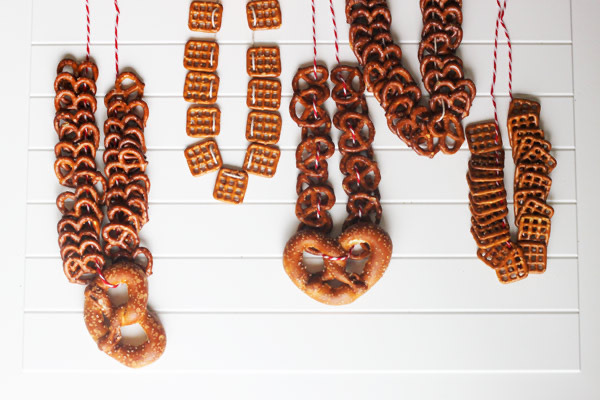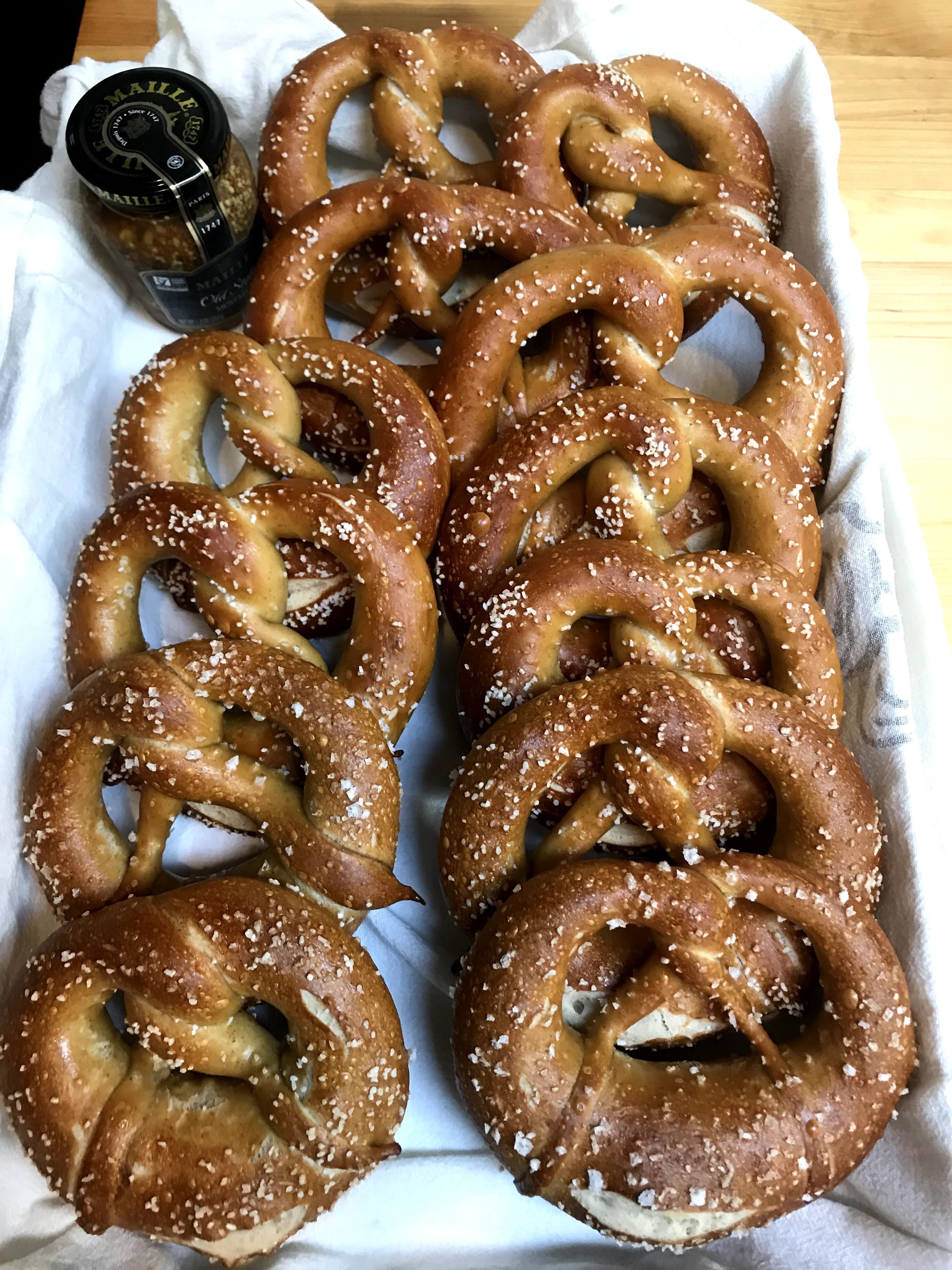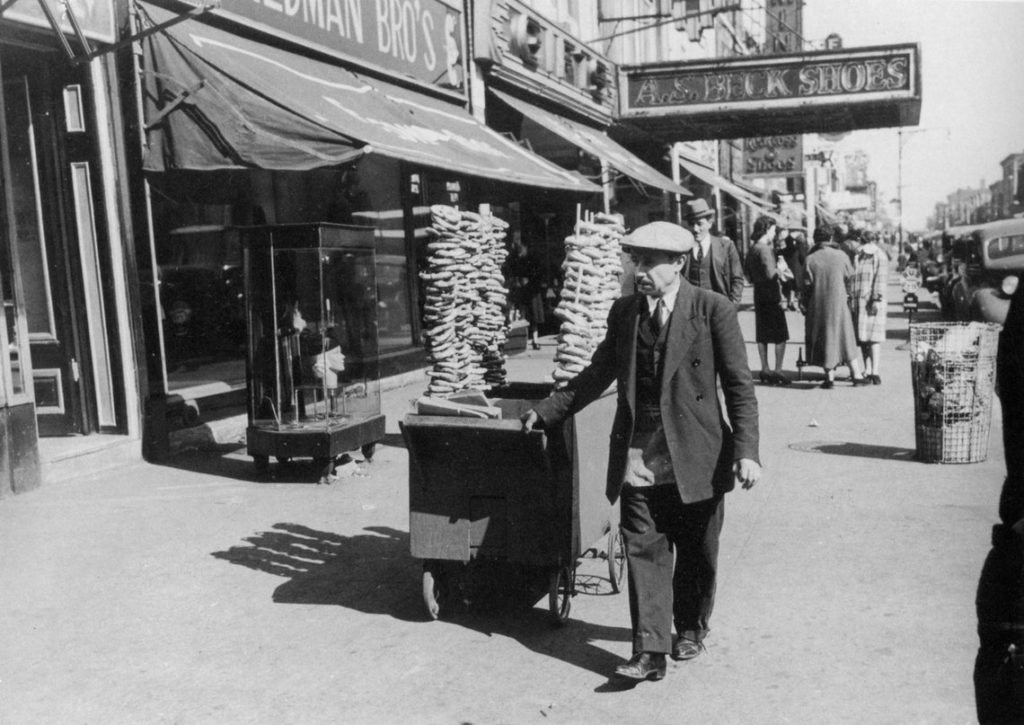Pretzels are amazing things! We are excited to celebrate National Pretzel Day today, April 26th, by sharing a bite of history about them. As many know, they are a traditional bavarian snack that comes in so many different shapes and sizes and can be oh-so-delicious when served hot and fresh. Pretzels are also so old that it is unclear exactly where they came from or when they were first made.

Several texts state that the history of the pretzel dates back nearly a millennia. Some say pretzels were invented by an Italian monk as a treat to the children for completing their prayers (around 600 A.D.). The pretzel shape is said to resemble arms crossed over one’s chest. Another legend ties the invention to a French monastery while another says they were invented by German bakers who were held hostage, for some reason or another.
The earliest recorded evidence of pretzels appeared in the crest of the German bakers’ guilds in 1111. The pretzel symbol was often used by German bakeries on their shop signs. These date back to a time when most of the general population was illiterate, so bakers got smart and came up with a symbol for what they were hand-crafting inside. And what better way to let passersby know what you made in your shop than to have a wooden pretzel hanging out over the street? It’s a call sign, a symbol, and a question all wrapped up into a single statement saying “Hey dummy, why aren’t you in here eating a fresh pretzel right now?”
According to some historians, the soft and delicious modern lye pretzel we know today was a tasty mistake. Legend has it that a baker at the royal coffee house in Munich inadvertently glazed his pretzels with a lye solution he had on hand for cleaning baking trays, instead of the usual sugar water, prior to baking. He then realized the mistake, but the perfectly browned pretzel smelled so good, he decided to serve them — to the visiting King of Bavaria, Ludwig I, no less. Clearly, they were a big hit and have become the golden-brown standard to this day.
Even in small geographical areas such as southern Germany, there are regional pretzel differences. In Bavaria, pretzels are allowed to split on their own, whereas in Stuttgart and the surrounding historic region of Swabia, the fat bottom portion of the pretzel is slit in order to predetermine where the split will be, which is caused by the expansion of the dough during baking.

In a prayer book used by Catherine of Cleves in 1440, there was a picture of St. Bartholomew surrounded by pretzels. By this time, pretzels were considered a sign of good luck and spiritual wholeness—possibly due to the three holes in the common pretzel shape touted to represent the Holy Trinity at this point. The “good luck” connotation carried the pretzel to other holidays, including New Year’s Day, when in Germany children hung pretzels around their necks; pretzels hung on Christmas trees in Austria in the 16th century; and parents hid little pretzels on Easter for children to find, an early version of an Easter egg hunt. In Switzerland, the pretzel shape was used as a marriage knot, and couples would each pull on a side of the pretzel on their wedding day. The larger half brought prosperity to the marriage—it was kind of like a doughy wishbone tradition.
Pretzels have long been integrated into the Christian faith. By the 16th century, it had become tradition to eat pretzels on Good Friday in Germany, and Catholics once considered them the “official food of lent.” Earlier laws of the Church stated that only one meal a day was to be eaten during lent and the food couldn’t come from an animal. Yet another origin story says that pretzels were developed as a food for lent. Whether or not this is true, pretzels did become a popular staple during the season because it was easy to make and fulfilled the Church’s guidelines.

Pretzels made their way across the Atlantic with German immigrants who were later to be known as the Pennsylvania Dutch in the 1700s. Many pretzel bakeries popped up in Pennsylvania around this time, and Pennsylvania continued to be the seat of American pretzel production and consumption; around 80% of pretzels made in America are made in Pennsylvania today. While it’s estimated that Americans eat two pounds of pretzels in a year, pretzel consumption in Philadelphia is estimated to be around twelve pounds of pretzels per person per year.
Early pretzels were of the “soft” variety; hard pretzels are something of a relatively modern invention. However, contrary to popular belief, hard pretzels did not originate in 1600 when a baker fell asleep while he was tending his fire, burning pretzels to a crisp, as good of a story as that might have been. In 1861, Julius Sturgis created the first commercial pretzel bakery in Lititz, Pennsylvania. It’s believed that his factory was the first to develop hard pretzels. These crunchy, salty snacks lasted longer in an airtight environment than soft pretzels did, allowing them to be sold in stores far away from the bakery and kept on shelves much longer.

These attributes allowed their popularity to spread rapidly and hard pretzels are now one of the best-selling salty snacks in America, sandwiched between potato chips and popcorn. Soft pretzels continue to be a popular snack item as well with push-cart pretzel vendors prevalent in Philadelphia and New York. The push-carts follow a long tradition of pretzel street vendors—it’s believed that they first started appearing in the mid-1400s. Pretzel vendors also provided one of the first confirmed types of food delivery service, as they would go door to door selling their baked goods.
Today, pretzels are most popular in America and in Germany, where they are featured at Oktoberfest. In America, besides covered in salt, hard pretzels commonly come dipped in chocolate or yogurt, while soft pretzels are commonly served with mustard or a cheese dip. Different flavors are available all over the world, featuring nuts, seeds, and glazes—a long way from the simple dough pretzels that were commonly served religious purposes so many years ago.
If your mouth isn’t already salivating after reading so much about tasty pretzels you can be assured that Bell Tower Brewing Co. will be serving, fresh, hot, house-made pretzels that traditional way straight from our kitchen. Now all you have to do is wait until we open!